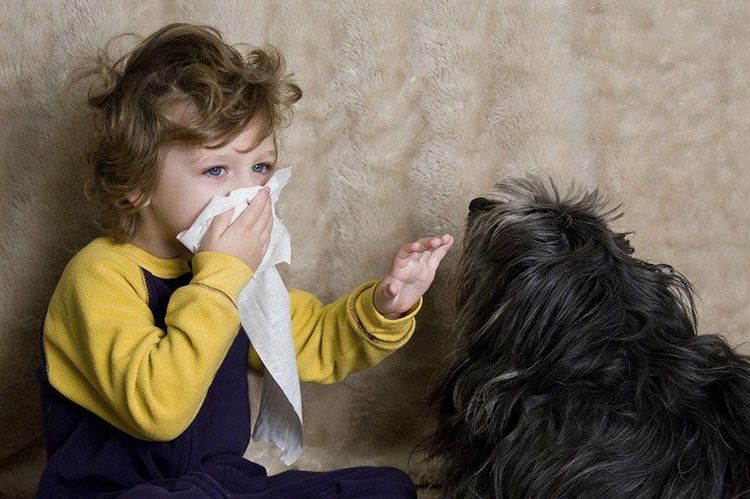This is an automatically translated article.
Some people after coming into contact with pets such as dogs and cats in the house often have symptoms of sneezing, runny nose,... These people may be allergic to cats and dogs. This condition will cause a lot of discomfort to the respiratory system and the health of allergy sufferers.
1. Why do pets make you sneeze? According to clinical allergists, cat or dog hair is not the main cause of allergies, regardless of whether the pet's hair is long or short, of any breed can cause this condition.
The cause of sneezing after contact with pets is due to protein in the saliva, fur or dead skin of cats and dogs. When this type of protein enters the body, the immune system mistakes these agents as harmful and creates antibodies against them. Therefore, people with allergies often experience symptoms such as asthma, itching, sneezing, red rashes or runny nose.
At the same time, genetic factors are also the risk of causing allergies to cats and dogs. According to researchers, genetic factors play an important role in the development of allergies. Therefore, people who live in families with a history of allergies are often at a higher risk of developing pet allergies when exposed.
In addition, ticks that live on your pet can be the cause of allergies. Dust mites can cause major allergies in humans, thriving on the fur of domestic pets such as dogs or cats...
2. Signs of allergy to cats and dogs When you are allergic to cats and dogs, you may experience the following typical clinical signs:
Dry cough and wheezing; Itching, redness with watery eyes; Runny, itchy, stuffy nose; Sneezing a lot. In the case of cat allergies causing asthma, your body may be at risk of additional symptoms such as:
Pain or tightness in the chest area; Shortness of breath or wheezing; Sleep disturbance, insomnia. Some common skin signs such as:
Itching, burning in the contact area; Raised red patches and rashes on the surface of the skin; Skin eczema. A skin or blood test called a RAST (radioactive absorber test) can help narrow down the cause of your allergies. It's best to get checked out because you may be allergic to pollen or mold that live on your pet's body, not if you are allergic to cat hair.

Dị ứng lông chó mèo sẽ gây ra nhiều khó chịu đến hệ hô hấp và sức khỏe
3. When to see a doctor? The signs of a cat and dog allergy such as runny nose, tears or sneezing, ... are quite similar to the common cold. Therefore, it is very easy for you to mistake the disease, leading to the wrong treatment, making the disease more and more serious. Therefore, when you regularly interact with pets and notice the above symptoms for more than 2 weeks, you need to go to the hospital. The doctors will appoint to do more paraclinical tests, diagnose the disease and take timely and appropriate treatment measures.
Besides, you need to pay attention to some typical signs of allergies in general and cats and dogs in particular to get to the hospital for timely examination such as:
The nose is completely blocked; Shortness of breath or wheezing; Difficulty sleeping. 4. How to prevent allergies to cats and dogs In fact, even if someone in the house is allergic to cats and dogs, about 25% of families continue to have pets in their home. If dog or cat hair causes you to sneeze, you can:
Keep pets or pets outside of your bedroom; Play with pets outdoors; Wash your hands after touching pets; Bathe your dog or cat at least once a week; Regularly clean carpets in the house.

Giữ cho vật nuôi hay thú cưng ở bên ngoài phòng ngủ của mình để phòng tránh dị ứng lông chó mèo
5. When adopting a pet, what should be done? In the case of a family with small children, you should see how the child reacts to the type of animal. By taking your child to visit a home that has that type of pet and let them try playing with it. That is no guarantee that they will not be allergic to cats or dogs. However, this test will help you make a better decision to adopt a pet. If you know your child has a cat or dog allergy and you still plan to have a pet, limit your child's exposure to it at first and monitor for a reaction. Allergies and asthma are diseases that cause many negative health effects. If your child has a severe allergy to cats and dogs, the only answer is to find a new home for the pet. Even then, it may take you about 6 months or longer to get rid of allergens from pets in the house. If you or someone in your family is in the 10% of people with cat allergies, consider getting a pet with no fur or fur. You might be looking for a turtle, hermit crab, fish or snake. However, these organisms also pose a few health hazards. This is because in these exotic pets can carry salmonella bacteria or other diseases. Among them, farmed turtles have been implicated in salmonella outbreaks. Pet allergies like dogs and cats are an allergic reaction to proteins found in the skin cells, saliva, or urine of an animal. The best way to prevent pet allergies is to avoid or reduce exposure to them as much as possible.
At Vinmec International General Hospital, there is a package of examination and advice on treatment of atopic dermatitis for all customers of all ages. Customers at risk such as allergies, affected by ambient conditions such as weather, climate, humidity and even pet allergies will be examined and tested including:
specialized in Dermatology; Perform tests such as: quantitative IgE, fresh mycobacteria, specific IgE quantification with respiratory allergens - food (Panel 1 Viet), test Rida Allergy Screen (panel 1)...
Please dial HOTLINE for more information or register for an appointment HERE. Download MyVinmec app to make appointments faster and to manage your bookings easily.
Reference source: webmd.com













